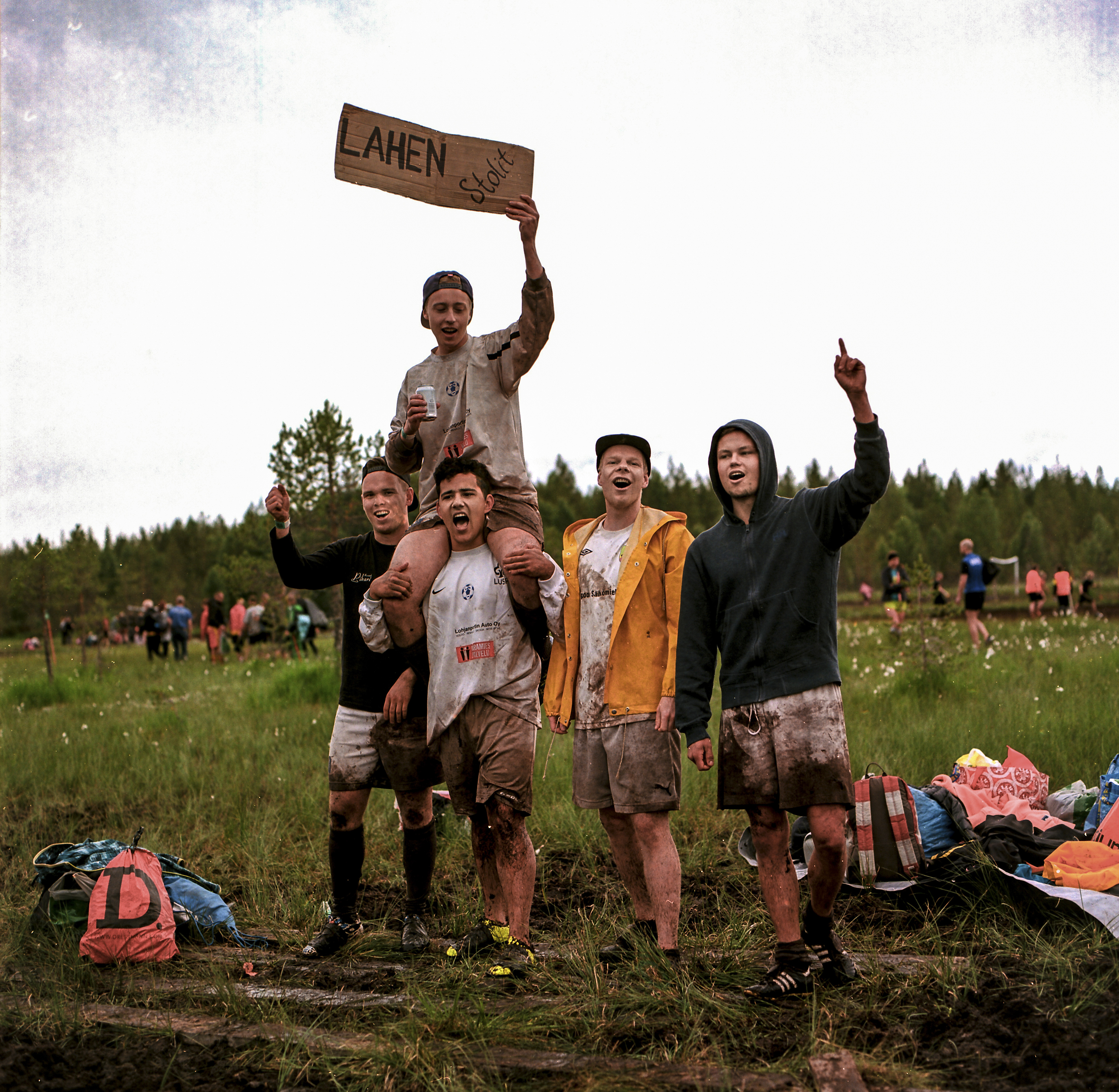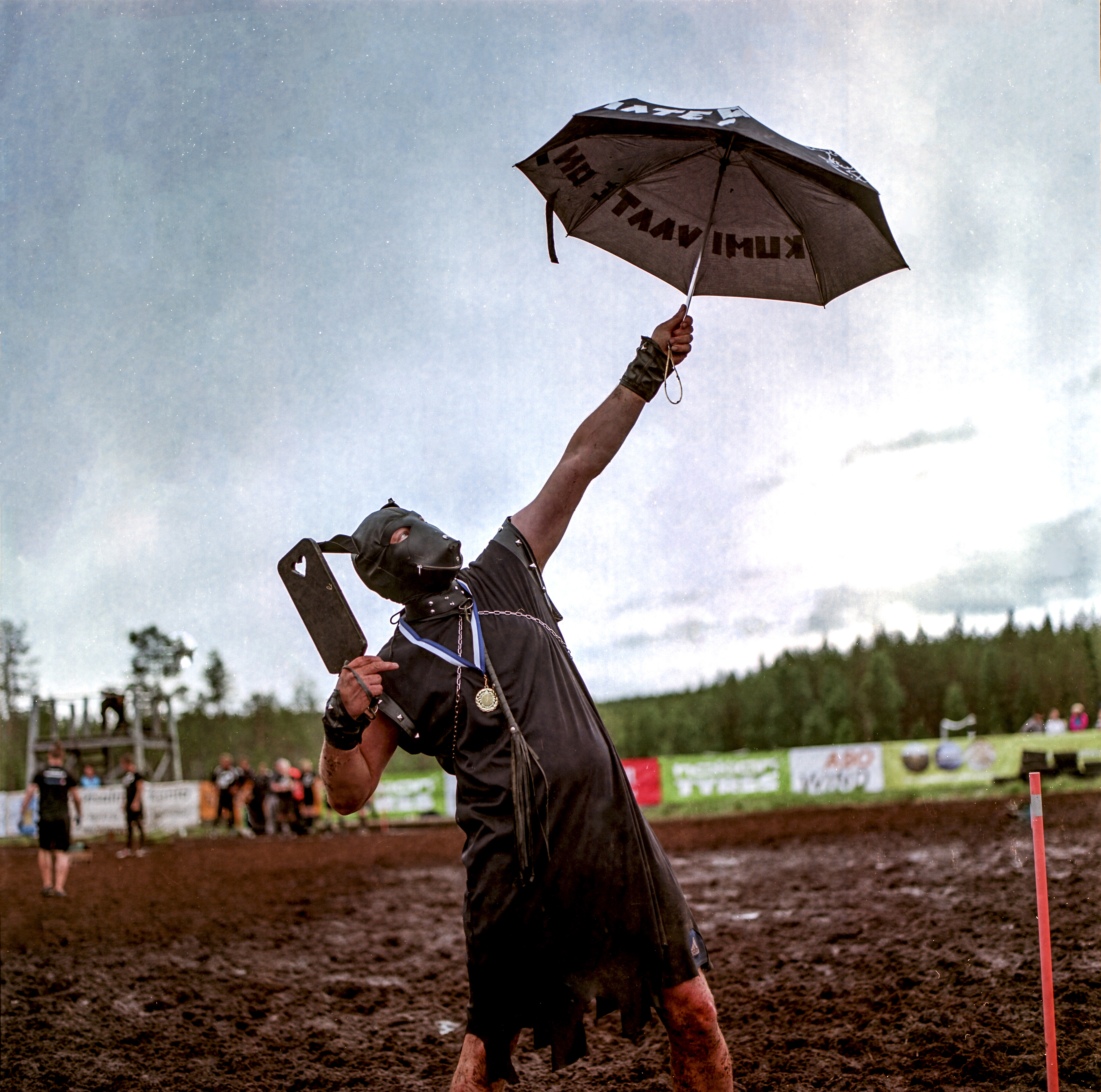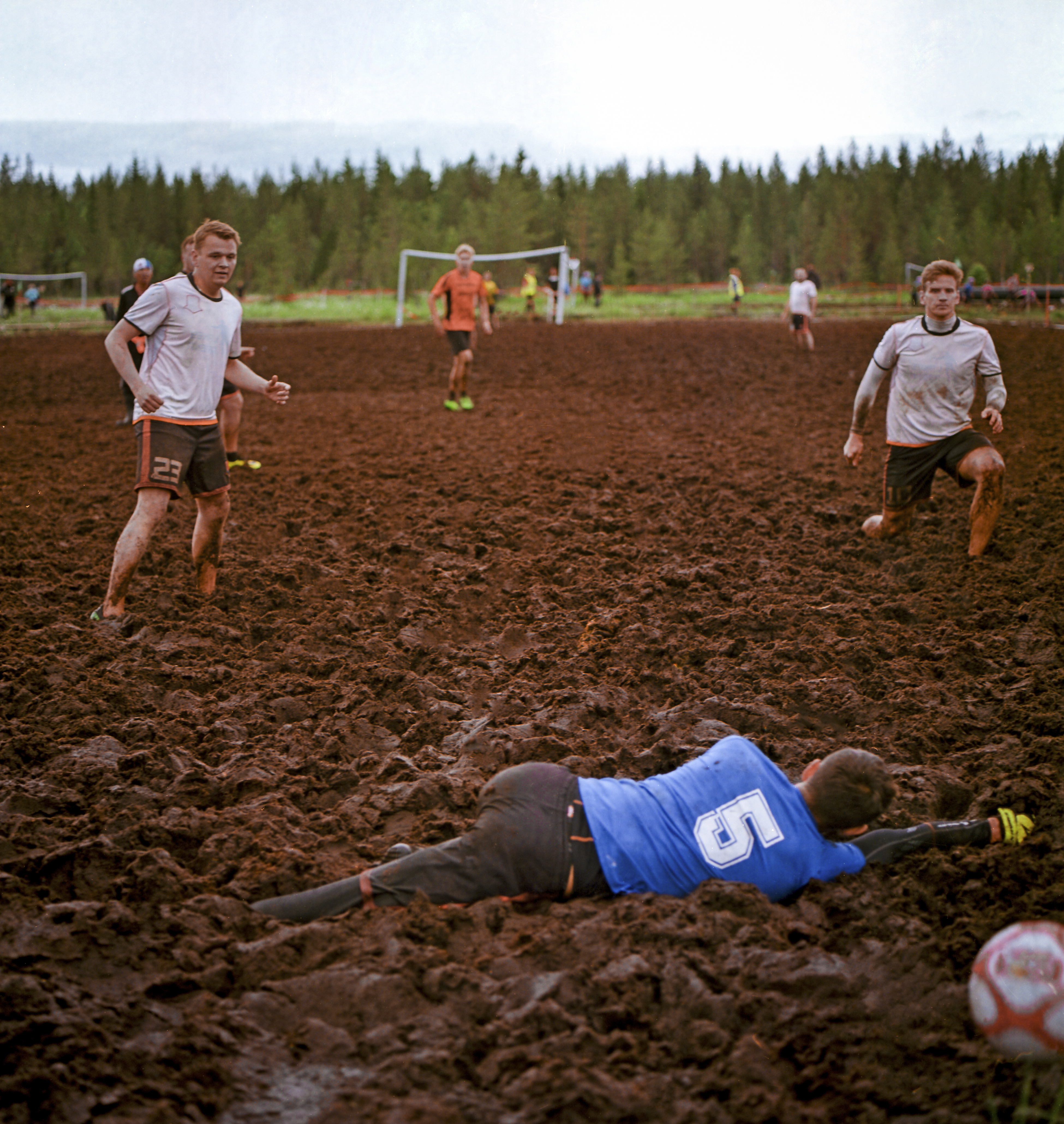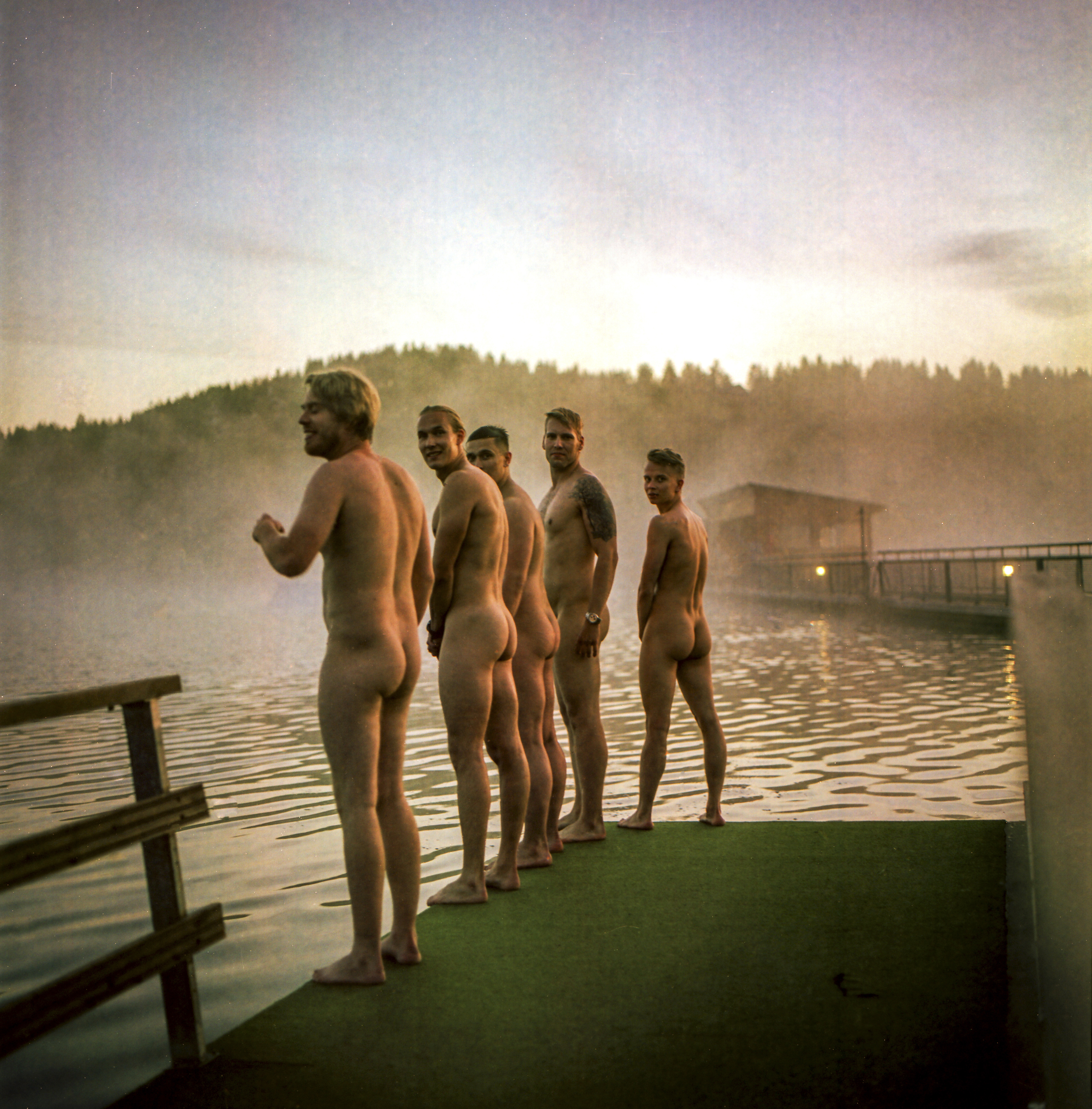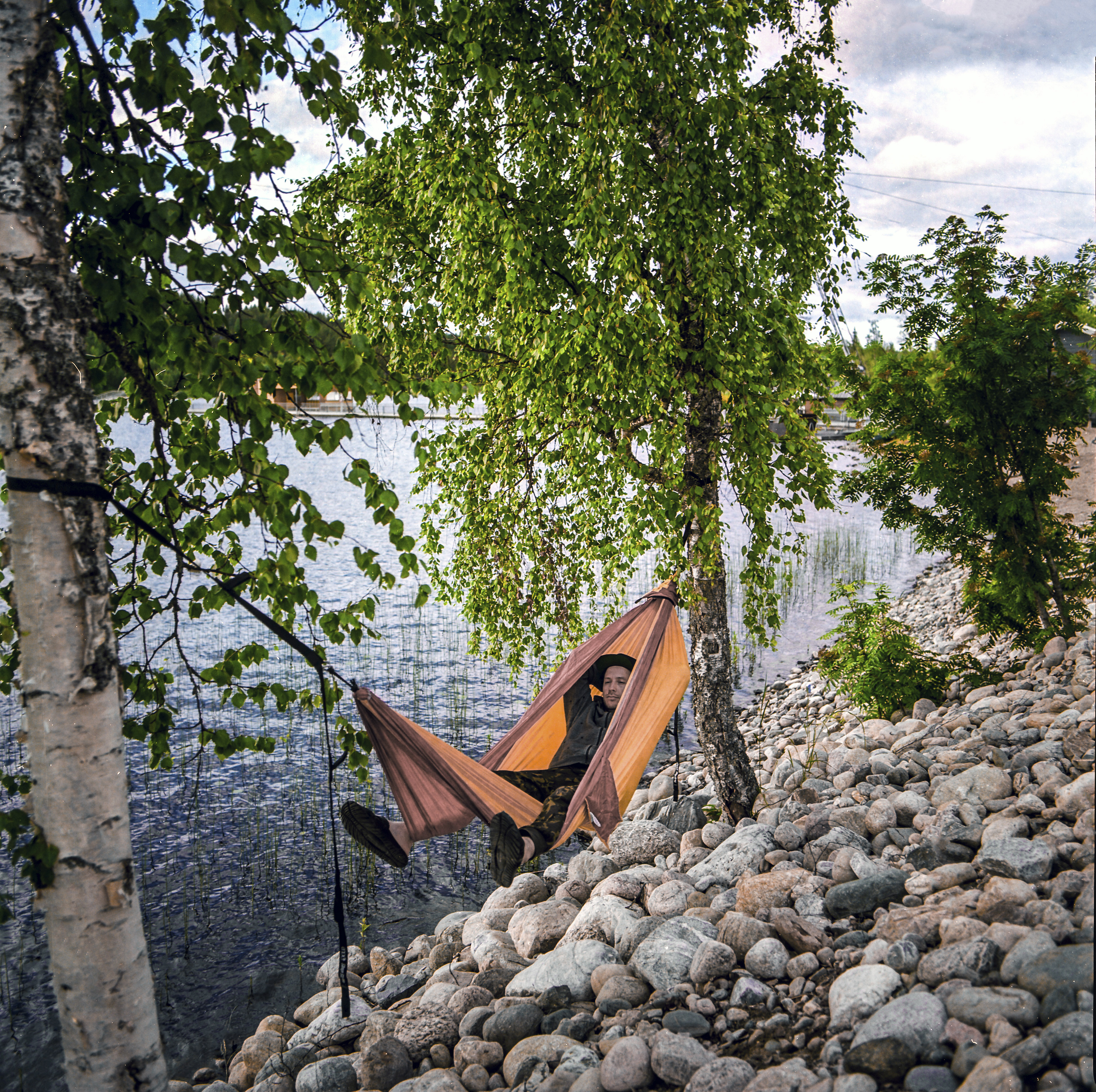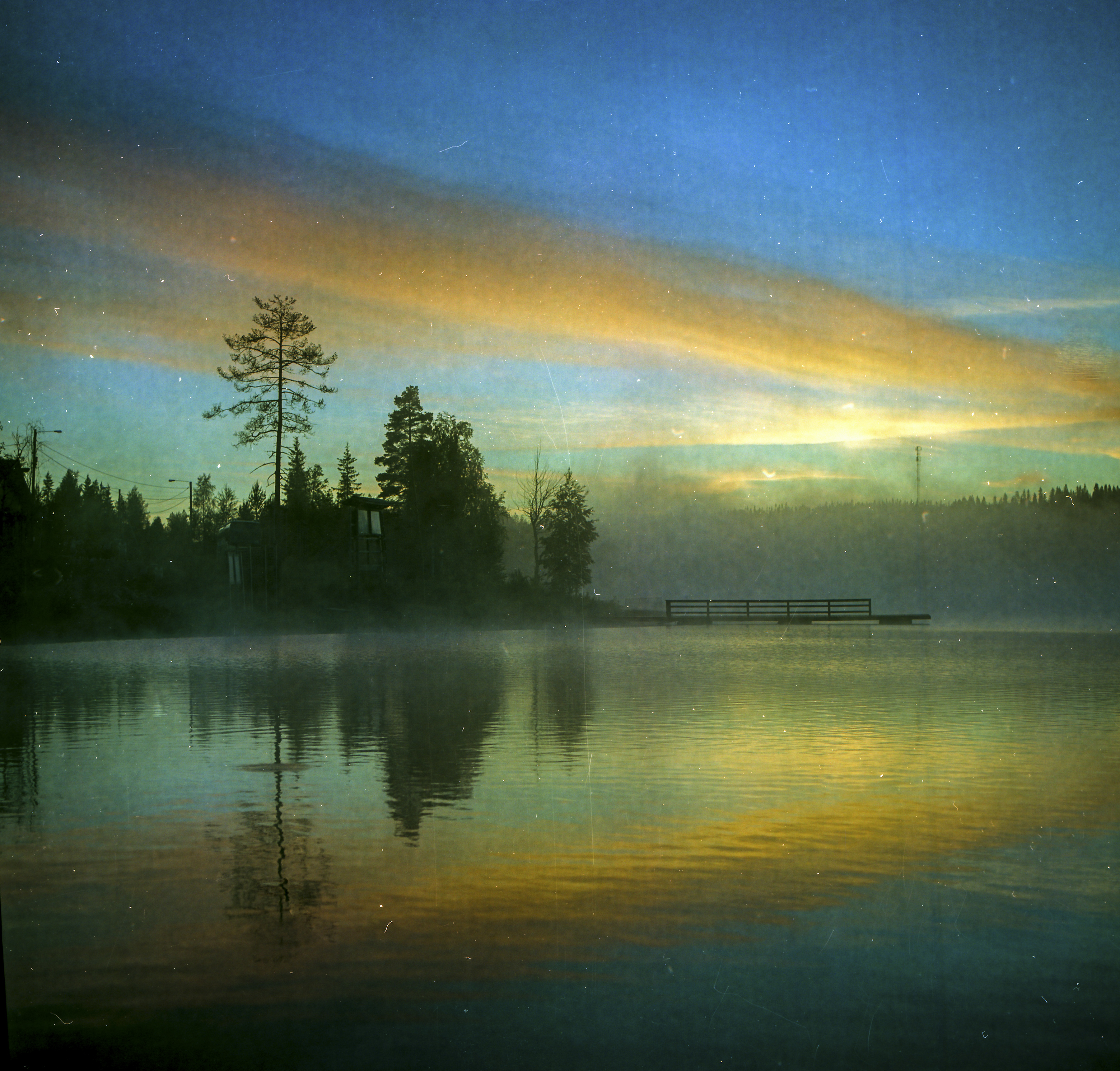Swamp soccer tops a long list unusual sports in Finland
HYRYNSALMI, Finland — There’s something strange going on in Finland. Over the past few decades, as it has all but disappeared from the global sports stage, this humble Nordic nation has sort of lost its sports mind.
More than 2,000 people ventured to the remote backwaters of central Finland recently for the 20th annual Swamp Soccer World Championships. If you and your spouse want to compete in the Wife Carrying World Championships, you must come to Finland. The Mobile Phone Throwing World Championships? Finland. The World Berry Picking Championship and the Air Guitar World Championships? Finland and Finland.
“We have some weird hobbies,” said Paivi Kemppainen, 26, a staff member at the swamp soccer competition and master of the understatement.
Just look at swamp soccer in Hyrynsalmi, a place where Jetta can achieve a small level of celebrity over the years. Jetta is a stuffed badger ensconced in a bird cage. She acts as a mascot of sorts for a team of 12 friends who make the seven-hour drive each year from Vihti, near Helsinki, for the competition. They bought the doll seven years ago from a junk store at a highway rest stop, and her fame around the swamp has grown ever since. A couple of years ago, she was interviewed by a local newspaper.
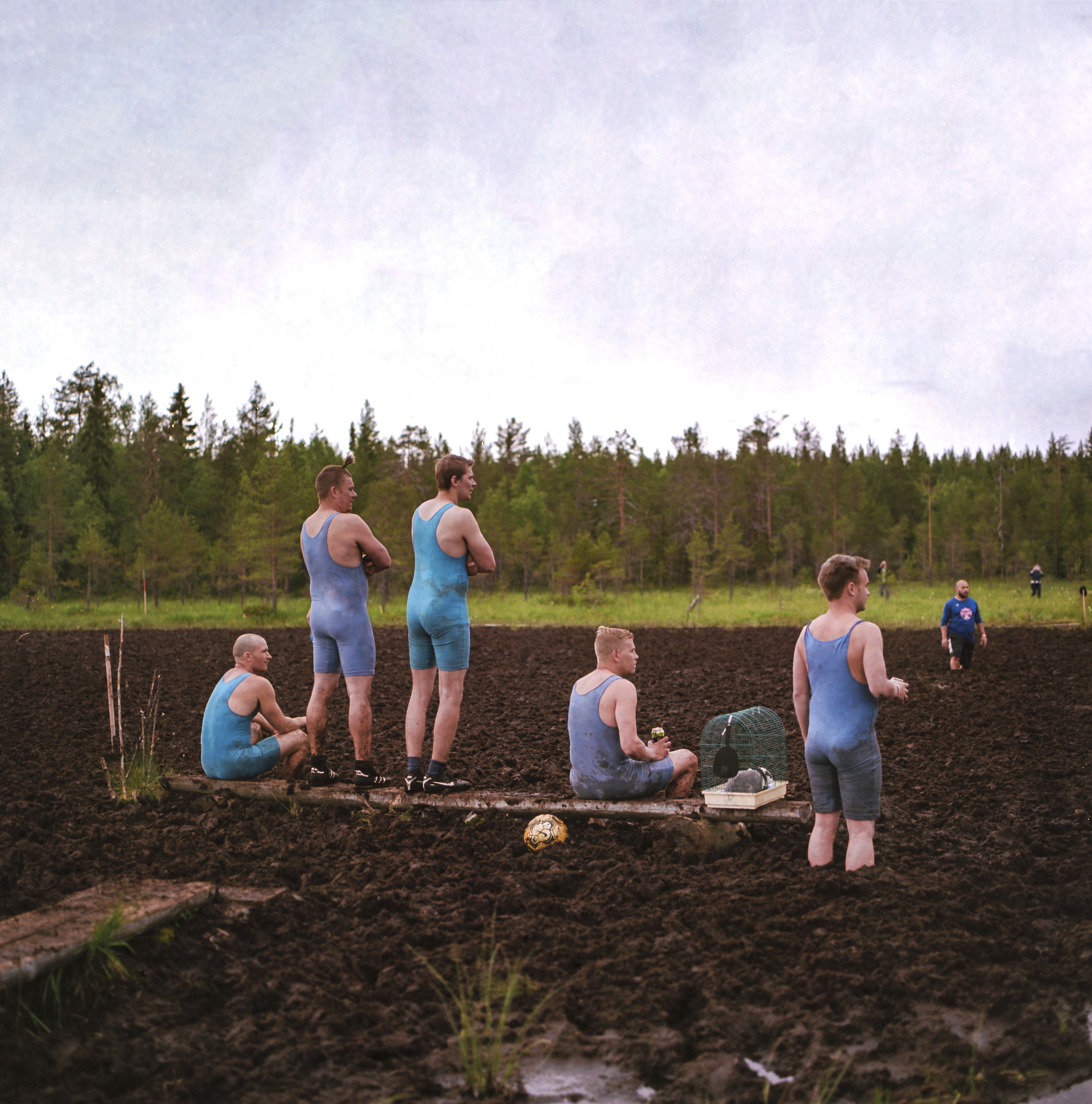
On Saturday morning, the men stood around shivering in threadbare thrift-store suits, which they said were their team’s official warm-up duds. A bottle of vodka was being passed around (their preferred way, apparently, of warming up). It was about 10 o’clock. Soon it would be time for their first game of the day. They set Jetta aside and stripped off their outerwear, revealing skimpy blue wrestling singlets.
Before they treaded into the mud, they were asked a question: Why?
“You can say you’re world champions of swamp soccer,” said Matti Paulavaara, 34, one of the team members, after a contemplative pause. “How many can say that?”
The genesis of swamp soccer was in 1998, when creative town officials in Hyrynsalmi cooked up a festival-like event that would make use of the area’s vast swamplands. Thirteen teams showed up for the first tournament. Since then, the competitive field has grown to about 200 teams.
The recent matches — six-on-six, with 10-minute halves — were played on 20 fields of varying squishiness, spread out over 50 acres of swamp. Finnish rock echoed through the woods.
People striding on seemingly firm ground would disappear suddenly into the soft earth, as if descending a stairway. Some tottered on their hands and knees, like babies. Others stood still, until they were waist-deep in muck. The scores were generally low. Many of the players were drunk.
It’s hard to imagine an uglier version of the Beautiful Game.
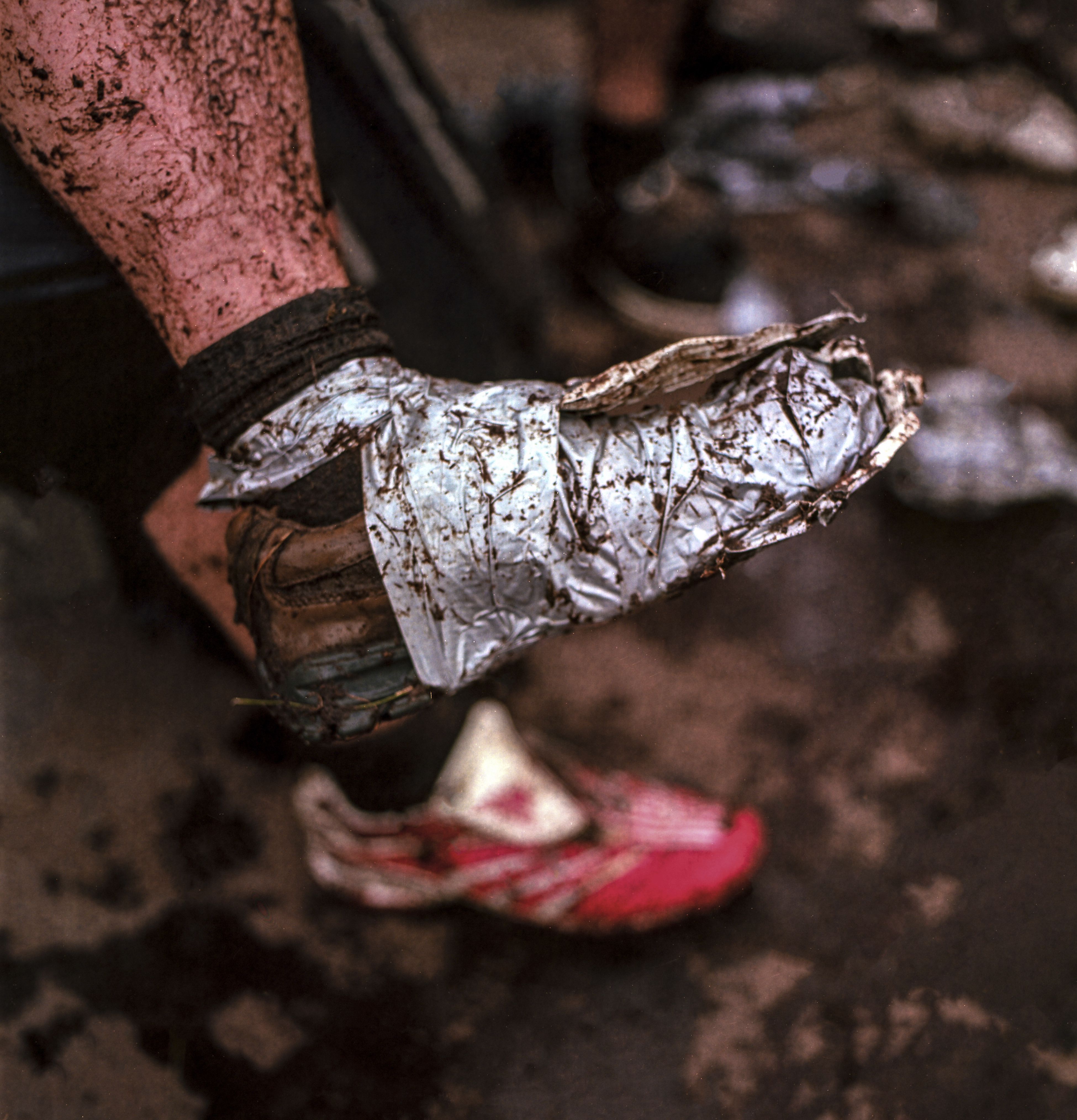
“You play, you lose, you win — no one cares,” said Sami Korhonen, 25, of Kajaani, who was playing in the tournament for the ninth time. “The whole game is so tough, you’re totally wiped out when you’re done.”
This streak of strenuous irreverence began sweeping through the quiet Finnish countryside in the mid-1990s, and has only grown since.
In 1995, a Finn named Henri Pellonpaa killed a world-record 21 bugs in five minutes at the Mosquito Killing World Championships in Pelkosenniemi.
The World Sauna Championships were heavily contested in Heinola from 1999-2010, until a competitor died from third-degree burns.
More recently, thousands of Finns, most of them teenage girls, have taken up competitive hobbyhorsing, wherein competitors trot and hurdle obstacles while riding the wooden toys.
How did this happen? How did Finland become such fertile ground for wacky sports?
There’s no simple answer, but Finns offer various deep-seated factors, including an enthusiastically outdoorsy populace (that goes slightly stir-crazy during the region’s oppressively dark winter months), widespread public access to recreational spaces, and a continuing relaxation of the traditionally reserved national character. (Also, alcohol.)
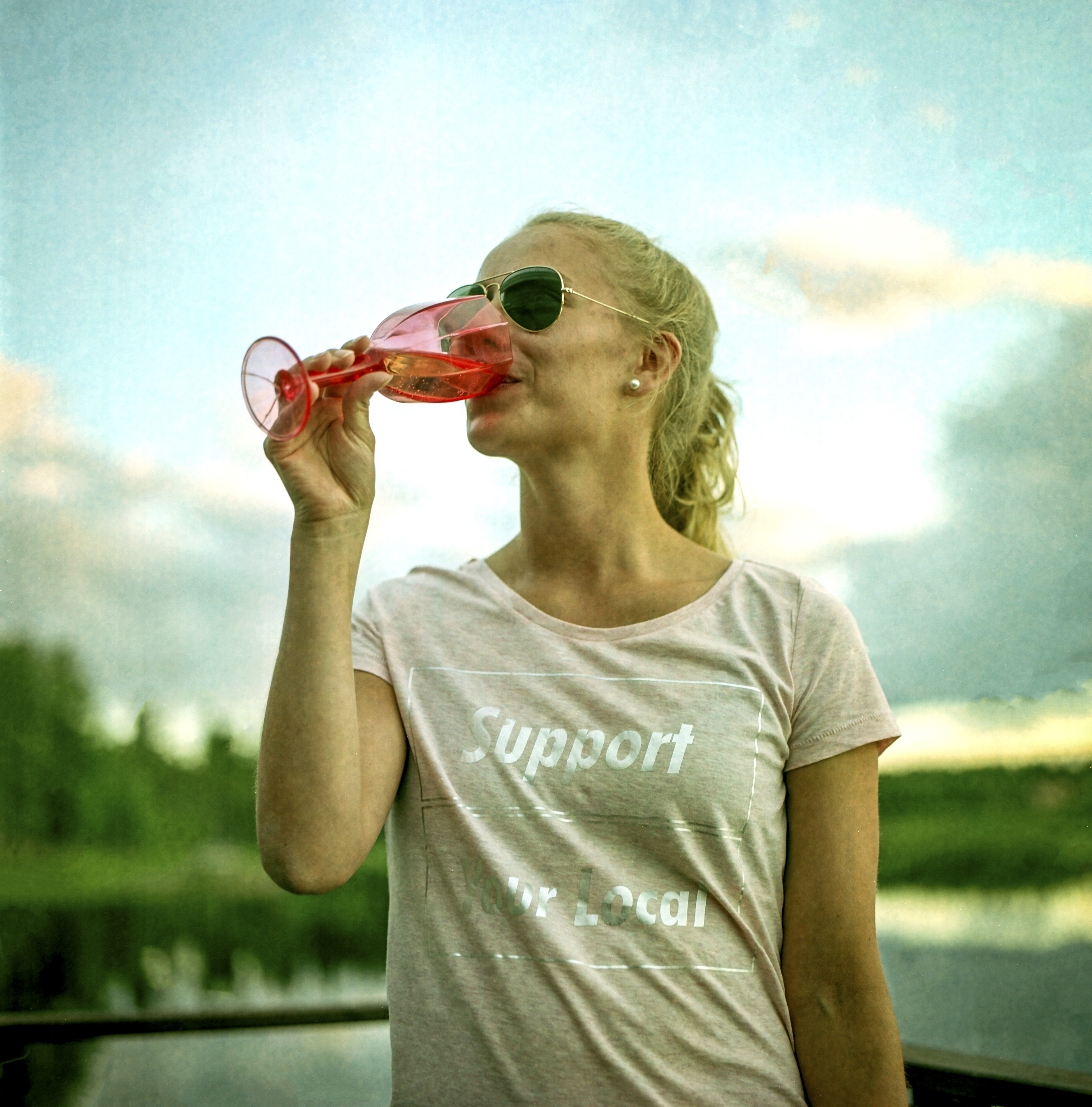
Finland is the most thinly populated country in the European Union. It boasts endless forests and almost 200,000 lakes, and its residents enjoy “Everyman rights,” which guarantee public access to most outdoor lands and bodies of water for recreational purposes. The European Commission consistently ranks Finns as among the most physically active people on the continent.
“We’re like a forest people,” said Lassi Hurskainen, 30, a former professional goalkeeper from Joensuu, who visited the swamp soccer tournament while hosting a segment for a Finnish sports television show. “So we come up with games that relate to nature.”
Straddling the Arctic Circle, Finland endures long, punishingly dark winters. Summer therefore marks a period of national catharsis. It helps that the country has an estimated 500,000 summer cottages, and because many Finns receive up to six weeks of vacation time per year, the act of unhurriedly passing time outdoors feels almost like a national birthright.
The mosquito-killing contest, for instance, was invented by a Finnish businessman named Kai Kullervo Salmijarvi as a summertime diversion for his children.
“I think we go a little crazy in the summer,” said Hanna Vehmas, a sports sociologist at the University of Jyvaskyla. “Mix that with alcohol, and maybe we want to compete a little bit.”
In Hyrynsalmi, the swamp soccer games were just one component of the weekend fun. Finns from all over the country — there were also a few teams from Russia — effectively doubled the population of the small town, where road signs warning of crossing moose dot the quiet roadways.
On Friday and Saturday nights, after everyone had cleaned the swamp water off their faces, there were loud rock concerts in the parking lot of a local resort until 2 a.m., when the soft glow of the sun was still visible over the hills.
“This is what I wait for every winter,” said Tapio Velenius, 38, who has been playing swamp soccer since 2005. “It’s tradition in Finland: having beer, no sleep, having fun.”
Velenius, an electrician from Jamsa who is built like a rugby player, was particularly adept at one of the sport’s most important moves: resting on your hands and knees and lifting up one leg, like a dog at a fire hydrant, to kick the ball.
But even the simplest movements in the swamp had Velenius and the other competitors gasping for air.
“You’re at maximum pulse every time you go 3 meters,” said Roosa Mannonen, 22, a student from Lahti, who entered the women’s competition with a group of friends.
There was a time long ago when Finland was very serious about its sports. Athleticism and physical activity were important concepts around which the country’s identity was built after it gained independence from Russia in 1917.
The first half of the 20th century brought what Pasi Koski, a sports sociologist at the University of Turku, calls the “golden age of Finnish elite sport.” The country won an average of 24 medals at the Summer Olympic Games from 1908-1948, punching well above its weight in the global arena. Champion runners, like Hannes Kolehmainen and Paavo Nurmi, achieved heroic status.
They embodied the important Finnish concept of sisu, which loosely translates into some combination of words like determination, patience and hardiness.
The rest of the world caught up, eventually. From 1992-2012, Finland took home an average of four medals at the Summer Olympics, and at the 2016 Games in Rio de Janeiro, the country won a single medal: the bronze in women’s lightweight boxing.
But if the halcyon days of elite sports in Finland seem like a distant memory, the contours of a new, far weirder era of national sports prosperity have taken shape, one that reflects the wave of individualism still growing in this young country.
Hence the wife-carrying races (where the winners receive the wife’s weight in beer) and the air guitar contests (hashtag: #makeairnotwar) and the soccer games in cold, coffee-brown swamp water. Hence the celebrity of Jetta, the badger doll.
“We learned to laugh at ourselves,” Koski said. “What’s so serious?”
